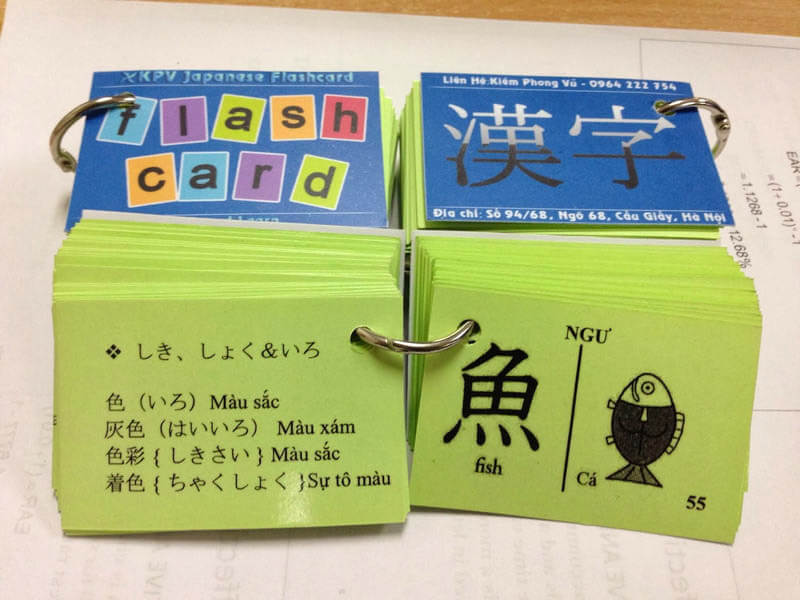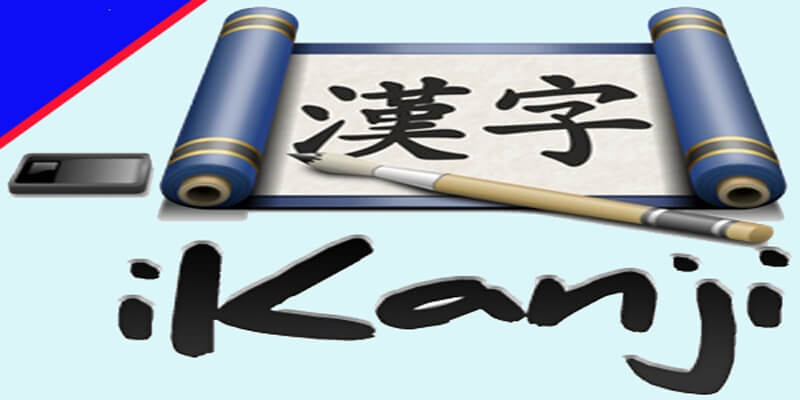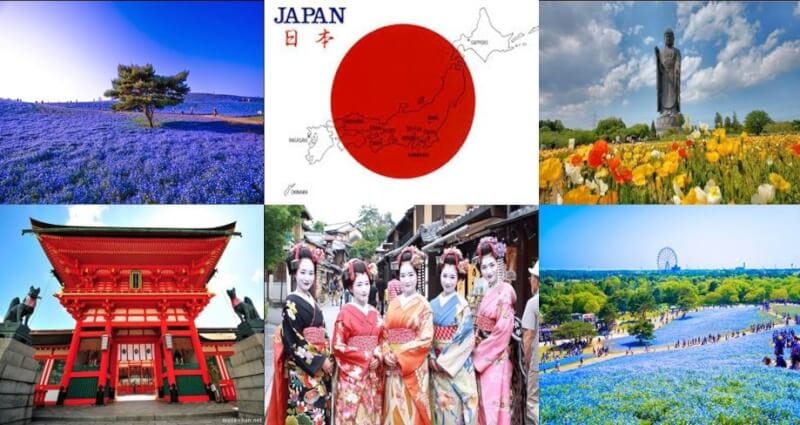If your childhood is associated with the movie Dragon Ball Z or Naruto, or you simply have a fascination with Japanese culture, then you have definitely thought about trying to learn this language. If you've decided to spend some time learning about Japanese, you've probably been overwhelmed with the sheer amount of Japanese-related stuff you have to learn. Since Japanese is so different from English, to learn it, you need to start from zero, it's almost like you have to work on learning a whole new skill. Even though you've put in a lot of effort to learn Japanese, you still end up feeling helpless with this "difficult" language.
+ Note: 10 Things About Japanese Culture You Probably Didn't Know
Is Japanese a difficult language to learn?
It is true that Japanese is said to be a difficult language to learn. In fact, it is often considered one of the most difficult languages to learn. However, the truth is not so. Once you immerse yourself in Japanese sentence structure or vocabulary, you'll find it's actually not as difficult as you think. The key to really making progress on your Japanese language journey is to map out your learning process and find a way to start small. Of course, to do this without help is really difficult; Even multilingual people need to know where to start with a new language.
For the Japanese, fortunately, this question is easy to answer: start with the alphabet. The Japanese actually use two fairly easy to learn alphabets: hiragana and katakana. It may sound difficult to learn two different alphabets, but remember that English also has at least two: uppercase and lowercase. Finding and memorizing these two alphabets should be a starting point for anyone who wants to learn Japanese. Imagine you are trying to learn English using only the Russian alphabet!
Another useful method to get started with the Japanese alphabet is to learn through flashcards. If you don't want to use flashcards, you can learn an app called Anki, which is also a comprehensive digital flashcard platform that allows synchronization between different devices. The name of this app comes from the Japanese word, which means memorize. Once you have memorized the alphabet, you can move on to learning simple sentence and grammar structures.
+ Note: Why The Japanese Game Industry Affects the World
Learning Japanese can be fun
Of course, if you feel too bored when learning the Japanese alphabet, you should break it down to learn it bit by bit. This will make you more comfortable when facing Japanese. Believe it or not, if you don't feel comfortable learning a new language it's highly unlikely that you'll use it fluently, not to mention the method you use to approach the language. Once you master the basics, you can learn anything with just a textbook. Language learning apps like Duolingo are also a great option, as long as you do your research to make sure they're right for you.
Getting Started with Children's Books and Cartoons
From here, we have a starting point and a common direction, how do we move forward without getting overwhelmed? The best way is to start with simple means. Simple native mediums like children's books and cartoons played a great role in this period. People will tell you that learning Japanese from books and anime is not a good idea, because it can teach you bad habits. Prove them wrong. It is important to always apply what you learn with the right context. Learning Japanese is like learning your native language, the more you use it, the faster you will learn. While these materials are quite expensive to ship from Japan, they are fairly easy to find on sites like YouTube.
+ Note: Compare The Similarities And Differences Between Chinese And Japanese
What is Kanji?
One aspect of the Japanese language that can be difficult for beginners to learn is Kanji. These are complex ideograms borrowed from China that represent the entire meaning of the word, not just a single sound. Unfortunately, Japanese people use thousands of kanji and Japanese learners are forced to memorize them in order to use them properly. The Japanese government forces students to learn these ideograms by constantly writing, repeating.
+ Note: Top 05 Japanese Translation Company in Hanoi Prestige
This method is working well in the Japanese school system, however, for foreigners, this method of learning Kanji makes learners feel a bit boring. However, the good news is that learning Kanji is not as difficult as you think if you apply the following learning methods:
The Heisig method
Instead of rewriting a Kanji over and over to memorize them, the Heisig method was born to make learning Kanji easier. In the 1970s, a wonderful guy named Jams Heisig came up with a method that made it easy for learners to learn as many kanji as they wanted in as little time as possible. He wrote his method in a very popular book called “Remembering The Kanji”.
This method focuses on teaching simple characters first and associating them with memorable stories so that learners can practice and quickly remember what they have learned. Documentation for this method is searchable online, so you don't need to buy a book to learn. And one thing is for sure, this method can help your Kanji learning.
Once you get used to the Heisig method, you can imagine your own stories so you can learn Kanji faster (it's a lot easier than learning each syllable). Understanding and reading Kanji is the starting point for your Japanese reading. When you can read a full Japanese sentence and understand it, you will definitely feel amazing, and it will not seem out of your reach. When you reach this level, everything becomes so easy. Heisig focuses mainly on learning and understanding the meanings of different kanji, so learning how to read a kanji can be a bit confusing at times. On top of that, Japanese, just like any other language, has a huge amount of slang and grammar not covered in your textbook. How do we begin to learn things that are not in this textbook? It's simple, it's taking advantage of the resources of the local people.
Basically, when you choose to read a Japanese book, even if it's a children's book, there are things you don't understand. How do we fix this? Every time you find a sentence with a word you don't know, or a grammar structure you're not familiar with, write it down on a flashcard! Then use a dictionary or online document to figure out what those words mean, and write them down on the back of the card. If you use the Anki app, the program will track your progress by measuring your ability to remember answers. The Anki app will set a longer interval of the cards to challenge your vocabulary memorization. This is called spaced repetition, and it has been scientifically proven to be one of the most effective ways to memorize large amounts of information without practicing for hours on end.
Once you've gotten used to how this works and regularly add sentences you don't know to your flashcards, you'll enjoy the process. You will find that you are no longer procrastinating on learning Japanese and you will learn new words almost effectively. This is the process of passively learning Japanese vocabulary and contextual words.
+ Note: The Knowledge You Need When Doing Business in Japan
Absorb the beauty that Japanese brings
The last thing you need to know is that using Japanese regularly, in everyday life is the key to language acquisition. Listening and reading Japanese passively makes you gradually get used to the appearance of Japanese and urges you to acquire the Japanese language. For example, if you change the language in your smartphone to Japanese, you are immediately forced to learn enough Japanese vocabulary to be able to use electricity. Also, remember to never watch cartoons with subtitles. Even if you only understand one-fifth of the words in the movie, persevere and focus on listening in Japanese; Because if you watch with English subtitles, your Japanese will never be better.
If you can do those things and believe in yourself, you will find it interesting. However, it's important not to let yourself burn out from studying Japanese, and to change your study habits regularly if you feel discouraged. Therefore, if there is nothing interesting in Japanese, you may have given up before you could learn interesting things from Japanese culture. Contact with idichthuat if you need one prestigious Japanese translation service Nhật most today.
Contact us today for the fastest service quote and consultation.
| ✔️ See more related information: | 👉 Reliable, Cheap, Professional Swedish Translation Chuyên |
| 👉 The Most Professional Electronic Translation | |
| 👉 Quick Translation of Seafood Documents | |

Nguyen Trung Khang - Talented interpreter and translator, passionate about translation
Nguyen Trung Khang is a talented interpreter and translator, with many years of experience in the field of translation and linguistics. He graduated from Ho Chi Minh City University of Education, majoring in Linguistics in 2015.
After graduating, Mr. Khang participated in a professional interpretation and interpretation training course at the University of Foreign Languages - Hanoi National University. He achieved a high-level certificate in interpreting and interpreting, and was also awarded a master's degree in linguistics.




